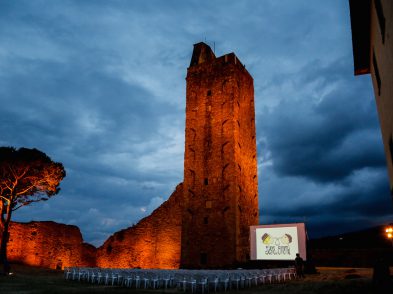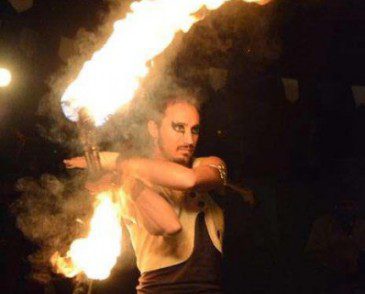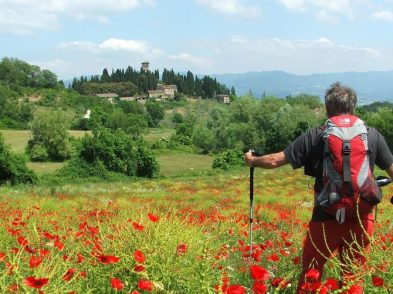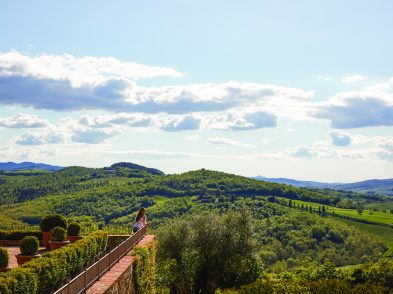In America, a barrel race is a rodeo event in which horsewomen negotiate a cloverleaf course marked off by three 55-gallon metal barrels. In Montepulciano, the Bravìo is sometimes described as a barrel race but is more properly called the Bravìo delle Botti. It’s a 1.8km team footrace run by eight pairs of highly conditioned Italian men, who push wine barrels weighing 80kg each up narrow cobblestone streets. They race from the piazza Savonarola around the walled city, past onlookers, winding up less than ten minutes later before a cheering grandstand crowd in the piazza Grande.
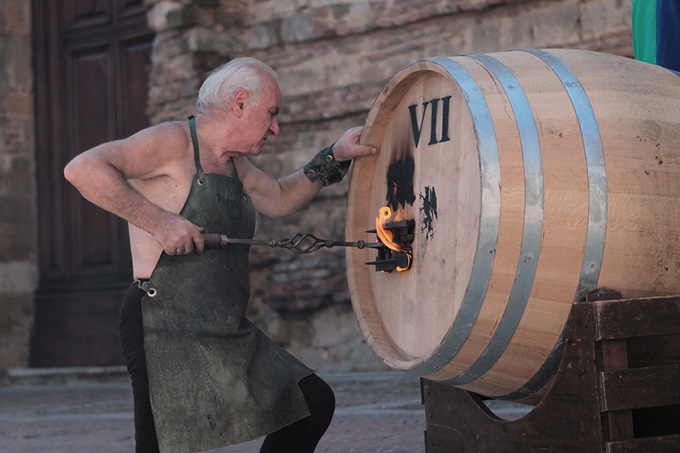
It is A) a thrilling spectacle; B) an inspired example of municipal branding and C) a grueling athletic event. In 2015, the winning race team La Contrada del Poggiolo came in with a time of 8 minutes 40 seconds. That’s 1.1 miles, uphill, pushing a 176-pound barrel, in 8 minutes and 40 seconds.
I asked Giulio Pavolucci, Montepulciano’s Magistrato delle Contrade, how the athletes train.
“They train all year round, both with and without the barrels, but always off the racetrack; they’re allowed to train on the official racetrack only during the official trials in the week before the race.”
What’s the sporting background of these athletes? What do they tend to excel in?
”Usually the spingitori come from the footrace world, especially 5,000- to 10,000-meter races; some of them also run the half marathon and marathon. They have to be good in endurance but also fast, and they need to have a lot of strength in the arms.”
A wine barrel does not roll straight. It’s got a bulge in the middle called the bilge. That makes it hard to control. The barrels occasionally go awry and crash into each other. I watched some YouTube videos of past Bravìos and I wondered if that barrel-bumping was strategic.
“Bumping on purpose is forbidden,” says Mr. Pavolucci, “but you can easily understand that eight barrels and 16 people pushing them in a narrow street are quite difficult to control, so especially in the first part of the race, it’s quite normal to have some crashes.” Judges trot alongside the athletes, watching for infractions. Onlookers duck for cover.
The race draws between 10,000 and 15,000 spectators. Many line the streets, leaping back into the doorways to avoid the barrels. The only place to watch the race from start to end is in the grandstands at the piazza Grande finish line, where it is shown on a large screen.
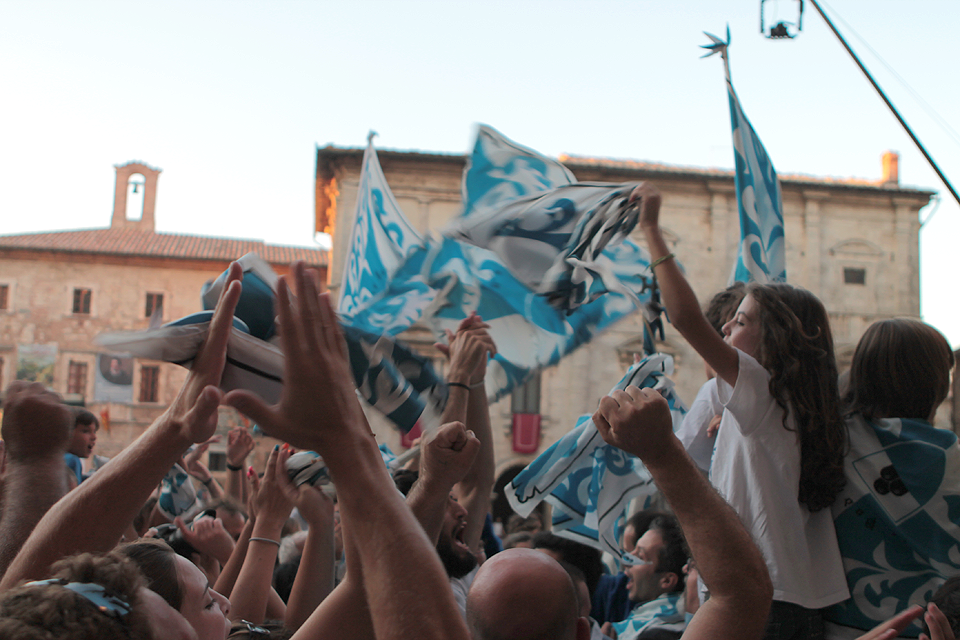
The winner receives a panno, or painted cloth, an artwork newly commissioned each year through a public call by the city council, which then awards it to the Magistrato as a gift. They call this panno the Bravìo, as they do the event.
Many Tuscan traditions, such as Siena’s famous Palio, are medieval in origin and developed during the Renaissance. The Bravìo delle Botti is 1970s in origin, developing during the era of bell bottoms and The Love Boat.
That is not to disparage it in any way. I myself am, in certain ways, 1970s in origin. But one likes to imagine what the city fathers of Montepulciano were thinking when they came up with the wine barrel idea. Tuscany already had palios, or contests, of all varieties—a horse race, a donkey race, a boat race, a jousting contest. But Montepulciano was not about horses or donkeys or boats or jousting. Montepulciano was about wine.
If you wish to attend the Bravìo delle Botti, arrive early in the morning and watch the 10am “extraction ceremony” in piazza Grande, in which the starting positions of the runners are drawn.
“Once a contrada is extracted,” says Mr. Pavolucci, “there’s a performance of flag bearers and drummers. Then people can have a traditional Tuscan lunch in almost every contrada.”
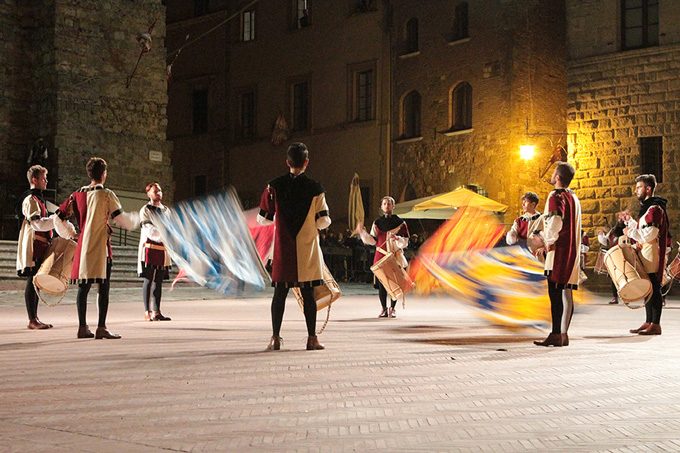
TIPS
The Bravìo delle Botti takes place in Montepulciano on the last Sunday of August (this year it lands on August 27*). Montepulciano is roughly an hour’s drive southeast from Siena, south from Arezzo, or west from Perugia. It is about an hour and 45 minutes south of Florence. There is both free and paid parking around the town, which, like most Italian walled towns of medieval origin, is a zona traffico limitato (ZTL), with very limited vehicular traffic within its walls.
*Updated for 2017


